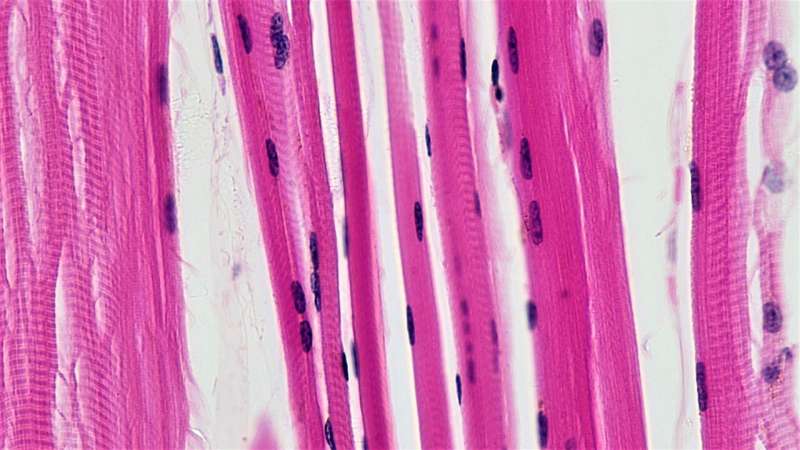Ceramides found to be key in aging muscle health

During aging, mice, like humans, become inactive and lose muscle mass and strength. A team of scientists led by Johan Auwerx at EPFL have now discovered that when mice age, their muscles become packed with ceramides. Ceramides, known for their use in skin care products, are sphingolipids, a class of fat molecules that are not used to produce energy but rather perform different tasks in the cell.
The researchers found that, in aging, there is an overload of the protein SPT and others, all of which are needed to convert fatty acids and amino acids to ceramides. "The sphingolipids and ceramides are complex yet very interesting fat class, and there is high potential to further study their role in aging, as they perform many diverse functions," says Dr. Pirkka-Pekka Laurila, a medical doctor and the lead author of the study.
Next, the scientists wanted to see whether reducing ceramide overload could prevent age-related decline in muscle function. They treated old mice with ceramide blockers, such as myriocin and the synthetic blocker Takeda-2, and used adeno-associated viruses to block ceramide synthesis specifically in muscle. The ceramide blockers prevented loss of muscle mass during aging, made the mice stronger, and allowed them to run longer distances while improving their coordination.
To study this effect more deeply, the scientists measured every known gene product in the muscle using a technique called RNA sequencing. "It turned out that blockade of ceramide production activates muscle stem cells, making muscles build up more protein and shifting fiber type towards fast-twitch glycolytic to produce larger and stronger muscles in aged mice," explains Dr. Martin Wohlwend, the main collaborator in the study.
Finally, the scientists looked at whether reducing ceramides in muscle could also be beneficial in humans. They examined thousands of 70–80-year-old men and women from Helsinki, and discovered that 25% of them have a particular form of a gene that reduces the gene products of sphingolipid production pathways in muscle. The people who had this ceramide-reducing gene form were able to walk longer, be stronger, and were better able to stand up from a chair, indicating healthier aging, similar to mice treated with ceramide blockers.
"These findings are very important as they provide us with strong incentive to develop inhibitors which could be tested in humans," says Johan Auwerx. The scientists are now embarking on collaborations with pharmaceutical industry.
The research is published in Nature Aging.
More information: Pirkka-Pekka Laurila et al, Sphingolipids accumulate in aged muscle, and their reduction counteracts sarcopenia., Nature Aging (2022). DOI: 10.1038/s43587-022-00309-6





















